Fort Defiance (formerly also known as Fort Sevier and Fort Bruce) [1] was a fort built during the American Civil War at Clarksville, Tennessee, on the Cumberland River. It changed hands several times during the war, and is now preserved by the city administration.
In November 1861, Confederate troops began to build a defensive fort that would control the river approach to Clarksville. They mounted three guns in the fort. On February 19, 1862, Union gunboats came up the river from Fort Donelson and reported the fort displayed a white flag and was deserted. [2] The Union took over the fort and enlarged it so that it would control traffic on the Hopkinsville (Kentucky) Pike. Clarksville was left with a small garrison of Union troops. In April 1862, this small garrison was made up of the 71st Ohio Volunteers commanded by Col. Rodney Mason. [3]
During July and August 1862, there was an increase in guerrilla activity around Clarksville. On August 18, 1862, Clarksville was recaptured by Confederate Cavalry. Col. Mason was cashiered for surrendering Clarksville so easily, although this penalty was later revoked. [4] Union soldiers were sent from Fort Donelson to retake Clarksville in September 1862. [5] Skirmishes were fought at New Providence on September 6, 1862 and at Riggins Hill on September 7, 1862. The town and fort were reoccupied by Federal troops who remained for the rest of the war. Col. Bruce was placed in command at Clarksville and Fort Defiance was renamed Fort Bruce. [1]
The four-acre Fort Defiance park features earthen fort and walking trails. It is located at 120 A Street, Clarksville, Tennessee. [6] The city of Clarksville dedicated a new $2 million Fort Defiance Interpretive Center in 2011 in time for the 150th anniversary of the start of the American Civil War in 2011. The Fort has been owned by the City of Clarksville since the mid-1980s, when it was donated to the city by retired Judge Sam Boaz who had owned and preserved the site for some time. [7]

Albert Sidney Johnston served as a general in three different armies: the Texian Army, the United States Army, and the Confederate States Army. He saw extensive combat during his 34-year military career, fighting actions in the Black Hawk War, the Texas-Indian Wars, the Mexican–American War, the Utah War, and the American Civil War.

Clarksville is the county seat of Montgomery County, Tennessee, United States. It is the fifth-largest city in the state, after Nashville, Memphis, Knoxville, and Chattanooga. The city had a population of 166,722 as of the 2020 United States census.

Fort Donelson was a fortress built early in 1862 by the Confederacy during the American Civil War to control the Cumberland River, which led to the heart of Tennessee, and thereby the Confederacy. The fort was named after Confederate general Daniel S. Donelson.

The Battle of Fort Henry was fought on February 6, 1862, in Stewart County, Tennessee, during the American Civil War. It was the first important victory for the Union and Brig. Gen. Ulysses S. Grant in the Western Theater.

The Battle of Fort Donelson was fought from February 11–16, 1862, in the Western Theater of the American Civil War. The Union capture of the Confederate fort near the Tennessee–Kentucky border opened the Cumberland River, an important avenue for the invasion of the South. The Union's success also elevated Brig. Gen. Ulysses S. Grant from an obscure and largely unproven leader to the rank of major general, and earned him the nickname of "Unconditional Surrender" Grant.

The Battle of Island Number Ten was an engagement at the New Madrid or Kentucky Bend on the Mississippi River during the American Civil War, lasting from February 28 to April 8, 1862. Island Number Ten, a small island at the base of a tight double turn in the river, was held by the Confederates from the early days of the war. It was an excellent site to impede Union efforts to invade the South by the river, as ships had to approach the island bows on and then slow to make the turns. For the defenders, however, it had an innate weakness in that it depended on a single road for supplies and reinforcements. If an enemy force managed to cut that road, the garrison would be isolated and eventually be forced to surrender.
Fort Donelson National Battlefield preserves Fort Donelson and Fort Heiman, two sites of the American Civil War Forts Henry and Donelson Campaign, in which Union Army Brigadier General Ulysses S. Grant and Flag Officer Andrew Hull Foote captured three Confederate forts and opened two rivers, the Tennessee River and the Cumberland River, to control by the Union Navy. The commanders received national recognition for their victories in February 1862, as they were the first major Union successes of the war. The capture of Fort Donelson and its garrison by the Union led to the capture of Tennessee's capital and industrial center, Nashville, which remained in Union hands from February 25, 1862 until the end of the war, and gave the Union effective control over much of Tennessee. This struck a major blow to the Confederacy early in the war.
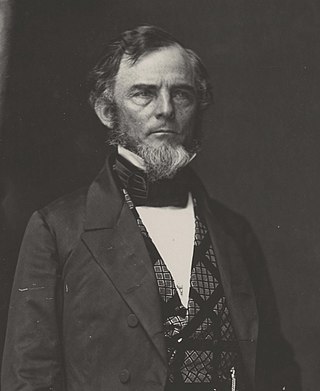
Gideon Johnson Pillow was an American lawyer, politician, speculator, slaveowner, United States Army major general of volunteers during the Mexican–American War and Confederate brigadier general in the American Civil War.
The Battle of Dover, also known as the Second Battle of Fort Donelson, was a battle of the American Civil War, occurring on February 3, 1863, in Stewart County, Tennessee.

The American Civil War significantly affected Tennessee, with every county witnessing combat. It was a divided state, with the Eastern counties harboring pro-Union sentiment throughout the conflict, and it was the last state to officially secede from the Union, in protest of President Lincoln's April 15 Proclamation calling forth 75,000 members of state militias to suppress the rebellion. Although Tennessee provided a large number of troops for the Confederacy, it would also provide more soldiers for the Union Army than any other state within the Confederacy.
Brackett's Minnesota Cavalry Battalion was a Minnesota USV cavalry battalion that served in the Union Army during the American Civil War.
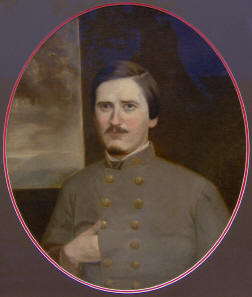
The Graves Battery, which had 73 troops and was led by Major Rice E. Graves Jr., was a part of the First Kentucky C Company, led by General John C. Breckinridge. This company was, in turn, a component of the First Kentucky Brigade, nicknamed the "Orphan Brigade".
Palmyra is an unincorporated community in Montgomery County, Tennessee. It is located along State Route 149, southwest of Clarksville. The town had its own post office until around 2010 when the post office was closed and mail service began to be handled out of nearby Clarksville. The zip code for Palmyra is 37142.
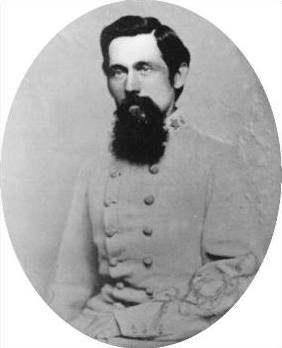
Gabriel Colvin Wharton was an American civil engineer and soldier who served as a general in the Confederate Army during the American Civil War. After the war he was a politician and later resumed his engineering work.
The 71st Ohio Infantry Regiment, sometimes 71st Ohio Volunteer Infantry was an infantry regiment in the Union Army during the American Civil War.
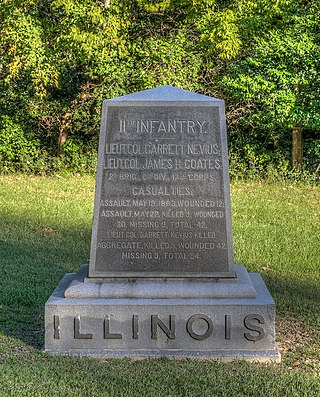
The 11th Regiment Illinois Volunteer Infantry was an infantry regiment from Illinois that served in the Union Army during the American Civil War. In April 1861, it was formed as a three-month volunteer unit, and in July 1861 it was reorganized as a three-year unit, in which role it served until the end of the war. Two of its commanding officers were promoted to brigadier general and led major units during the war. In its first major action at Fort Donelson the regiment suffered terrible losses. The 11th Illinois also fought at Shiloh, Riggins Hill, Vicksburg, First Yazoo City, Second Yazoo City, and Fort Blakely. In April 1863, the 109th Illinois Infantry Regiment was disbanded and its enlisted men transferred into the 11th Illinois. The regiment was mustered out of service in July 1865.

The 7th Texas Infantry Regiment was a unit of Confederate States Army infantry volunteers organized in 1861 that fought mostly in the Army of Tennessee during the American Civil War. The regiment was captured at Fort Donelson in 1862 and sent to Northern prison camps. After the survivors were exchanged and new recruits added, the regiment was reconstituted and fought at Raymond, Jackson, Chickamauga, Missionary Ridge, and Ringgold Gap in 1863. The unit served in the Atlanta Campaign and at Franklin, Nashville, Averasborough, and Bentonville in 1864–1865. The regiment's 65 survivors surrendered to William Tecumseh Sherman's Federal forces on 26 April 1865.
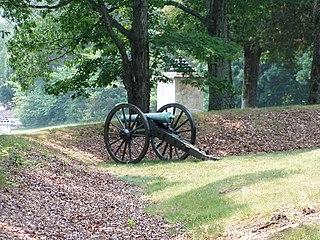
Battery C, 2nd Illinois Light Artillery Regiment was an artillery battery from Illinois that served in the Union Army during the American Civil War. The battery was organized in August 1861 at Cairo, Illinois and remained there until March 1862. The battery spent the rest of the war on guard duty at Fort Donelson and Clarksville, Tennessee and engaged in some skirmishes. The soldiers were mustered out in August 1865.

Battery H, 2nd Illinois Light Artillery Regiment was an artillery battery from Illinois that served in the Union Army during the American Civil War. The battery was organized in December 1861 at Springfield, Illinois before traveling to Cairo and to western Kentucky in early 1862. The battery formed the garrison of Fort Donelson and Clarksville, Tennessee from March 1863 until the end of the war. The soldiers were mustered out of Federal service in July 1865.

The Battle of Riggins Hill was a minor engagement in western Tennessee during the American Civil War. A Confederate raiding force under Colonel Thomas Woodward captured Clarksville, Tennessee, threatening Union shipping on the Cumberland River. Several Union regiments led by Colonel William Warren Lowe advanced from nearby Fort Donelson and drove off the Confederates after a struggle lasting less than an hour. The action occurred during the Confederate Heartland Offensive but only affected the local area.
36°32′26″N87°22′21″W / 36.5406°N 87.3725°W